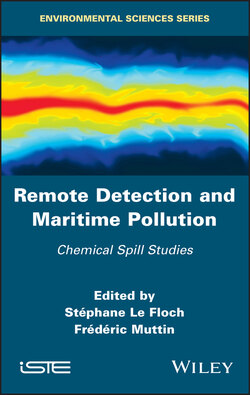Читать книгу Remote Detection and Maritime Pollution - Группа авторов - Страница 17
1.3.1.1. Vertical configuration
ОглавлениеEight different HNS (benzene, toluene, xylene, diethyl ether (DEE), rapeseed oil, propanol, methanol and heptane) were released into seawater inside a floating aluminum frame that was installed in the CEDRE pool, as presented in Figure 1.1. For each product, different spill volumes were used from 60 mL up to 5 L, and the seawater was thoroughly cleaned after each spill.
Figure 1.1. (a) Aluminum frame installed in the CEDRE pool. (b) Aerial lift with the three hyperspectral cameras
Three different hyperspectral imaging systems from 0.4 to 12 μm were used during this campaign: two reflective sensors (NEO HySpex cameras) from 0.4 to 1 μm (VNIR) and from 1 to 2.5 μm (SWIR) and a thermal longwave (LWIR) sensor from 8 to 12 μm (Telops Hypercam). Hyperspectral imaging cameras were deployed inside an aerial lift at a height of 12 m above the pool with a nadir-looking geometry and a Bomem MR300 spectroradiometer was placed next to the edge of the pool. The three sensors were pointed towards the expected center of the slick.
The aim was to evaluate how hyperspectral sensors can contribute to the detection of pollutants in a nadir-looking geometry.
